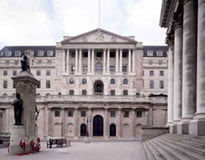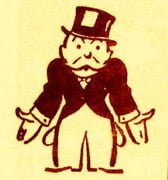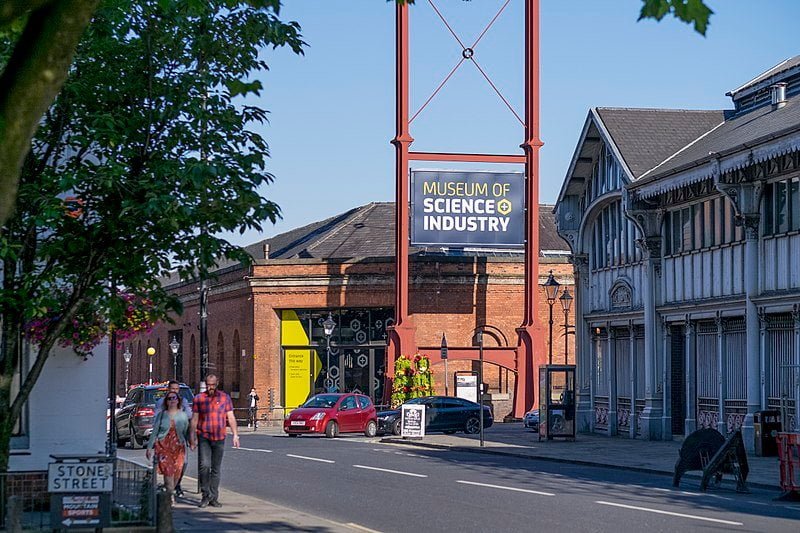For the capitalists, this Great
Recession could be more or less over, but the level of spare capacity
in industry and construction together with the level of debt still owed
by businesses, government and households alike mean that this recovery
may be stunted. Every major capitalist economy now finds that it has
more than 30% more capacity than it needs to meet demand. That is a
record high of overcapacity in industry.
Still, for the capitalists, this Great Recession could be over – for now, anyway. The pace of decline in the major capitalist economies slowed in
the second quarter of this year. Indeed, in some major economies like
Germany and France, national output rose. And in some smaller ones like
Australia and Norway, there was a small pick up in growth.
There is light at the end of the tunnel for capitalism – perhaps. Photo by scottog on flickr.At
the same time, the big less mature capitalist economies like India and
Indonesia continued to grow, while China also maintained positive
growth. Indeed, in Asia’s less developed capitalist economies, which
contribute about 10-15% of global output, industrial production is up
sharply.
Measures of business confidence have turned up – they may not
indicate much growth but they do indicate a bottom. The stock markets
of the major economies have experienced a massive rally in prices. From
lows in March, there has been a 50% rise in stock prices across the
board, led by the financial sector and bank shares.
The epicentre of the crisis that triggered it all was the housing
market, particularly in the US, but also in Europe and other capitalist
economies. Prices of the average home in the US have plummeted by 30%
from their peak, and similar falls have been experienced in the UK.
Sales transactions and mortgage applications have fallen over 75%. But
in the last few months, there has been a stabilisation of sales and
even a small increase in prices in certain countries. The bottom of the
housing bust is nearly there, even though prices could fall further yet
as unemployment rises and more people default on their mortgages.
The OECD and other economic forecasters have now upgraded their
estimates of growth in national output for the major economies. They
now expect GDP to rise in the US and Europe in this third quarter of
2009, with the UK lagging behind and not recovering until Christmas.
But recovery it is for 2010 across the board.
The OECD now forecasts that the Great Recession that officially
started in 2008 will have fallen 3.7% in the top seven capitalist
economies this year. That follows a 4% plus decline in 2008. So this
recession will mean that the top seven economies will have lost 10% of
their national output in less than 18 months. But it is even worse than
that if you take into account the loss of potential output that should
have been achieved by these capitalist economies of say 3% a year. In
effect, 15% of output has been lost forever.
Also staggeringly, we have seen a fall in world trade of about 15%
in real terms since the start of the Great Recession – the whole
capitalist world has been involved. But now it looks as though trade
will recover in 2010.
As for the global financial system, the IMF puts the total loss from
the credit crunch at $4.1trn, or 6-7% of world GDP, lost forever. The
IMF reckons that the US banks have suffered about 60% of their ultimate
losses, while the European banks have admitted about only 40% of
theirs. The ECB says Eurozone banks face another $300bn in further
losses.
The key question now is whether the banks and other financial
institutions (insurance, pension funds and hedge funds) have raised
enough capital to cover future losses (assuming that these institutions
can also make profits from here on to help restock capital reserves).
The latest data show that globally financial institutions have
raised less in new capital than their losses. This suggests that,
unless governments are prepared to come in with another bailout, banks
globally will be unable to expand credit for some time ahead as they
try to raise reserves and capital to meet capital adequacy levels. This
is the real hit to future economic growth globally.
So the banks will not help economic growth for the next two years at
least unless they can raise more capital and that implies more state
funding of perhaps $200-$500bn, an unlikely outcome.
That’s because, governments in developed countries have already put
up $11trn of taxpayer funds, or one-fifth of global output, to support
the financial sector. This involves the biggest input of taxpayer’s
money since the Second World War.
The Great Recession has been hugely damaging to capitalism. But
economic recovery is now ahead – there is light at the end of the
tunnel, perhaps – for capitalism.
But for the working class, the Great Recession has a long way to go
yet. Unemployment is rising sharply. In the US, it has hit 9.7%, the
highest level for 26 years and is expected to rise above 10% by the end
of the year. If you include all the people receiving some form of
benefit, there are 15m Americans now looking for work.
About 4.3% of U.S. homes, or one in 25 properties, were in
foreclosure in the second quarter, the Washington-based Mortgage
Bankers Association said last month. That’s the most in three decades
of data, and loans overdue by at least 90 days, the point at which
foreclosure proceedings typically begin, rose to 7.97 percent, the
highest on record.
America’s working class have taken a huge hit. There was an average
$2,000 decline in real household income in 2008, the largest annual
drop in 40 years! Real incomes for average Americans are now back where
they were 12 year ago.
Such is the inequality of income and wealth in the US that for the
bottom 20% of households, the fall has been even worse. Just 25 years
ago, the top 20% of American households had 45% of all income; by 2008,
that share had reached more than 50%.
The burden of meeting debt repayments remains at record levels –
around 18-19% of average income. According to a recent survey by
ACNielsen, Americans are “among the most cash-strapped people in the
world”, with 22% having no money left after having paid for essential
living expenses. Out of 42 top capitalist nations, Americans saved the
least.
The big disaster has been the loss of wealth tied in the value of
the homes that Americans have bought and in the value of the shares
they own through their retirement accounts. Since the start of the
Great Recession, household wealth has plummeted by 20% with $14trn
being lost in value; $5trn from the value of homes; $6trn in the stock
market and another $3trn from other investments.
It is the same story in the UK, where the HBOS bank estimates that
an average of £31,000 per household has been lost in wealth because of
the Great Recession: £422bn from falling house prices and £393bn from
lower share prices. This is the first fall since 2001. British workers
have tried to reduce their debts accordingly and been forced to default
on their mortgages. Even so, net wealth (after reduced debt) fell 10%
in 2008.
 So what sort of recovery can we expect now that the Great Recession
So what sort of recovery can we expect now that the Great Recession
has bottomed? The optimists of capitalism hope that it will be
V-shaped. That means they expect that the sharp fall in global output
and profits will be mirrored in reverse by a sharp recovery. The losses
suffered during the Great Recession will be quickly recovered and it
will be business as usual for capitalism.
This is the ‘natural’ sort of recovery under capitalism and was
experienced, for example, after the big slump of 1974-5, after which
followed five years of strong economic growth before capitalism dropped
into an even deeper slump in 1980. But it may not happen this time.
In the natural recovery, the recession reduces the cost of
production and devalues capital sufficiently to drive up profitability
for those capitalist enterprises still standing. Unemployment drives
down labour costs and bankruptcies and takeovers reduce capital costs.
Businesses then gradually start to increase production again, and
eventually begin to invest in new capital and rehire those in the
‘reserve army of labour’ without a job. This boosts demand for
investment goods and eventually workers start buying more consumer
goods and recovery gets under way.
But such is the overhang of spare capacity in industry and
construction this time and such is the level of debt still owed by
businesses, government and households alike that this recovery may be
stunted. After all, every major capitalist economy now finds that it
has more than 30% more capacity than it needs to meet demand. That is a
record high of overcapacity in industry. Production is going to have to
rise some way before new investment will be considered.
It could take the form of a U-shape: what is called a jobless
recovery as we saw after the recession of 1991-2. In the early 1990s,
businesses renewed investment slowly and held back from rehiring
workers for several years. So economic growth was slow in resuming.
It could even become W-shaped. There would be a double-dip. The
weight of overcapacity and debt would be too much to allow the revival
of consumer spending and investment, so the economic recovery would be
short lived and the major capitalist economies would slip back into
recession. That is what happened in 1980-82. It took two recessions to
get thing going finally.
Even worse, the recovery could take an L-shape. As in Japan after
the collapse of the great credit bubble there in 1989, the economy
remained in the doldrums for a whole decade. Huge debt has piled up in
the banks and rather than write these off and cause major bankruptcies
and a banking crisis, the Japanese government used taxpayer’s money to
bail the banks out with loans and guarantees. The banks in turn sat on
their debts, but did not lend money for new investment. This sounds
similar to the current environment.
But probably, the recovery will be more like a square root sign. The
big fall in output is over. Now there will be an upturn. But it will
fall short of restoring the rate of economic growth achieved before the
Great Recession. Instead of 3-4% a year, output in the major economies
will be closer to 1-2% a year. That will not be good enough to restore
profitability to previous levels. The capitalist system will thus face
the risk of a new slump further down the road.
Click here to read more about the background to the recession.






